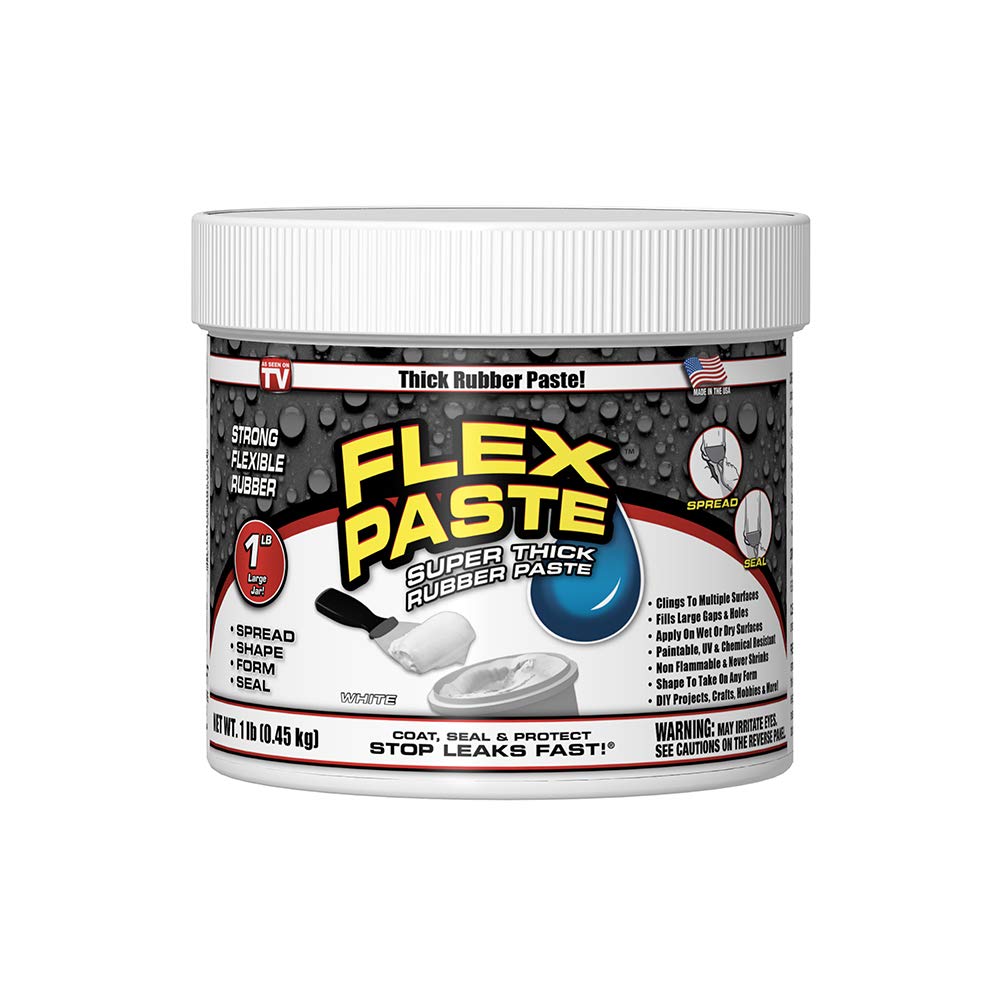Yes, few Flex Seal products can be sanded once it’s fully cured but some Flex Seal products specifically Flex Seal paste aren’t ideal for sanding down. Flex paste is ideal for repairs that require a thicker application and can be molded to shape. It’s recommended to sand lightly and not aggressively, as it may damage the seal or the surface underneath. Always make sure to follow the instructions on the product label before attempting to sand Flex Seal. Additionally, it’s important to note that certain surfaces sealed with Flex Seal may not require sanding at all, as the product may adhere well enough without any additional sanding.
Some flex seal products such as Flex Seal Clear have a smooth finish once dried, eliminating the need for sanding altogether. It’s always best to test a small area first before proceeding with sanding on larger surfaces. If unsure about the compatibility of sanding with your specific flex seal product, it’s recommended to contact the manufacturer for further instructions and guidance.
You may, however, need to sand down flex seal products such as Flex Glue, which is a thicker adhesive that can be used on various materials including wood, metal, and concrete. In this case, sanding down the cured product can help to ensure a smoother finish for paint or other coatings to adhere better. Again, it’s important to test a small area first before attempting to sand the entire surface.
How to stand flex seal:
Below are steps to sand down flex seal glue;
Sanding Flex Seal can help create a smoother surface or prepare it for painting. Here’s how to do it properly:
- Wait for Full Cure: Ensure the Flex Seal is completely cured before attempting to sand. Depending on the product, environmental conditions, and thickness of the application, curing can take anywhere from 24 hours to several days. Consult the product instructions for specific curing times.
- Choose the Right Sandpaper: Start with a medium-grit sandpaper (around 120- to 180-grit) for the initial sanding. If you need a smoother finish, you can finish with a finer-grit sandpaper (220-grit or higher).
- Sanding Technique: Sand the area gently in a circular motion. The goal is to roughen the surface slightly or to smooth out any imperfections without removing too much of the Flex Seal material. Be careful not to sand too aggressively, as this could damage the integrity of the seal.
- Clean the Surface: After sanding, remove any dust or debris from the surface with a damp cloth. Allow the area to dry completely before proceeding with any further applications, such as painting.
- Safety Precautions: When sanding, wear protective gear such as a dust mask and safety glasses to protect yourself from inhaling particles and to shield your eyes.
Can you sand flex seal paste?
Regarding the issue of whether you can sand Flex Seal, particularly Flex Paste, it’s possible to do light sanding though it’s not advised. Instead of sanding, it’s recommended to smooth out the applied paste to achieve the desired finish or to incorporate any artistic texture according to your preference. Additionally, avoid wiping excess Flex Paste inside the container as it may lead to the product drying out. Prior to subsequent uses, ensure to remove any Flex Paste that has dried or formed a skin inside the container.
Why is sanding not advisable for flex seal paste?
Sanding is generally not advisable for Flex Paste due to its unique properties and intended applications. Flex Paste is a thick, rubberized paste designed for filling, sealing, and waterproofing a wide range of surfaces. Here are some reasons why sanding Flex Paste may not be recommended:
- Texture and Consistency: Flex Paste has a thick, rubberized consistency that is designed to form a durable, flexible barrier when cured. Its texture does not lend itself well to sanding, unlike more rigid surfaces or fillers that can be smoothed out more easily.
- Impact on Integrity: Sanding Flex Paste could potentially compromise its integrity and sealing properties. The product is designed to create a waterproof seal, and altering its surface by sanding might reduce its effectiveness in preventing leaks or moisture penetration.
- Difficulty in Achieving a Smooth Finish: Given its rubberized nature, achieving a smooth, even surface by sanding Flex Paste can be challenging. The process may result in an uneven surface that does not meet the aesthetic or functional requirements of the project.
- Designed for Specific Applications: Flex Paste is formulated for specific repair and sealing tasks where its strength and flexibility are paramount, and a perfectly smooth finish is not always necessary. Its primary function is to seal and repair, rather than serve as a base for finishes that require sanding.
- Manufacturer’s Recommendations: Manufacturers typically provide guidelines on how their products should be used for optimal results. If the manufacturer advises against sanding Flex Paste, it’s likely because it does not contribute to the product’s intended performance or may even detract from it.
For projects requiring a smooth finish that will be painted or otherwise finished, it might be more appropriate to use a different type of product designed to be sanded and painted. If the appearance of Flex Paste is a concern, consider alternative methods of application or finishing that can achieve the desired look without compromising the product’s effectiveness.
Why you shouldn’t sand Flex Seal Liquid:
Sanding down Flex Seal Liquid is generally discouraged due to its rubbery nature, which complicates the sanding process and can potentially damage the integrity of the seal. Users report a range of experiences, from finding it nearly impossible to sand without ruining the smooth surface, to others who have applied light sanding with fine-grit sandpaper to minimize clumps.
However, this approach requires caution as it may lead to inconsistencies in the texture and might compromise the waterproofing qualities. The challenge lies not only in the physical alteration of the Flex Seal layer but also in the application of subsequent coatings, like primer or paint.
While some have managed to apply additional layers after sanding, there’s a consensus that these layers may not adhere as well or last as long as they normally would, due to the compromised surface created by sanding. For projects requiring a polished finish, like painting water reservoir lids for algae prevention, these nuances underline the importance of considering the material’s properties and application environment carefully. Following best practices for application, and avoiding modifications such as sanding unless absolutely necessary, can ensure the longevity and effectiveness of Flex Seal products in DIY projects.
Check out this reddit post on why you shouldn’t sand flex seal

